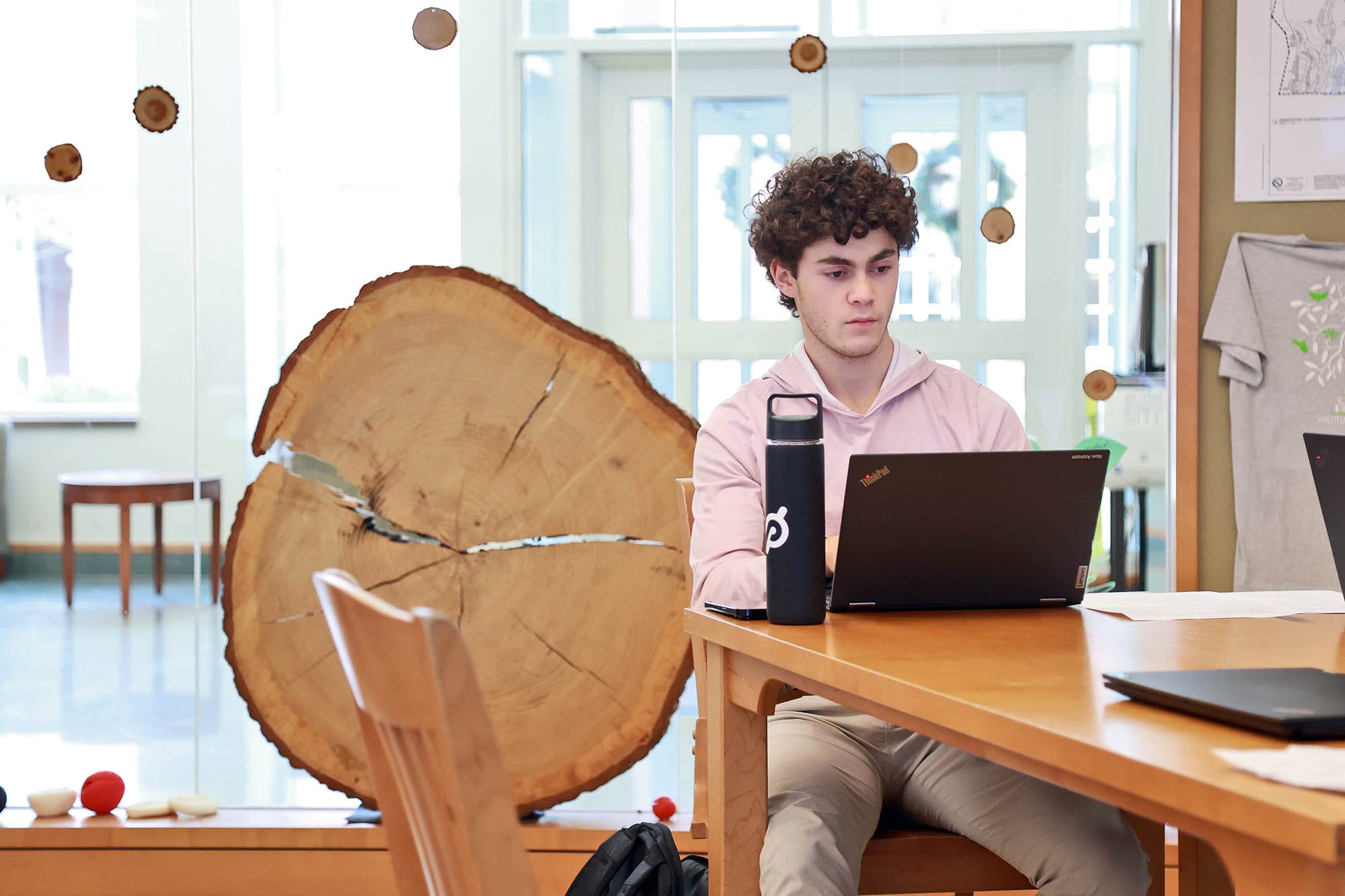The nine students in the Upper School elective Exploratory Botany had the unique experience of learning about ethnobotany. What is ethnobotany? It studies how people of a particular culture and region use indigenous (native) plants. Students researched their own personal botanical history and created websites highlighting their history.
It all began with interviews of family members over Thanksgiving break with an overall goal to create an engaging, informative website that illustrates the importance of plants. Upper School Science Teacher Laura Bradford said, “All semester long, they have worked to reduce Plant Awareness Disparity (PAD, formerly plant blindness), where people tend to overlook or not notice or appreciate the plants in their immediate environment. This phenomenon often leads to naïve points of view, such as plants are unimportant or do nothing for humans.”
Students spoke with older family members about their memories of plants and how they relate to their families. Questions included asking family members if their relatives or ancestors had connections to certain plants, perhaps those used in specific traditions, medicine, meals, or for income or hobbies. Students asked if plant-based products were historically significant to their family, such as baskets woven from plant fibers, salves from medicinal plants, syrups from trees, honey from local bees, wood carvings from particular trees, or even moonshine from corn! They also worked with family members to source family photos related to the plants they identified for their family.
With that data, students identified three potential plants to represent their family’s botanical history. From mangoes, apples, blackberries, and jasmine flowers to pine, redwood, fir, Japanese weeping trees, and everything in between, the students’ botanical stories spoke to their heritage, family geography, and family history.
After completing their independent interviews and research, students built their personalized websites in class before finalizing the end product here.
Something that Safi Junejo ’24 found especially rewarding was learning about his family’s culture from an entirely new perspective. “I interviewed my mom to learn about what plants were prevalent during her time in Pakistan, and she told me about jasmine flowers and mangoes. Researching and compiling information about both plants really made me feel more in touch with my culture,” he said.
Julianna Resch ’24 found the project thoroughly enjoyable. She said, “I enjoyed finding the different plants that connect my family and me. Although I could not find any ancestry connection, my immediate family was a different story. When I was talking to my father about my project, he commented on the importance of redwood trees to him. He told an interesting story of when he was born, his father planted a redwood tree on the same day, allowing the tree to grow up with my father. This type of connection is something my father wanted to pass down to me and my sisters. With the combination of living in California for most of my life and the love he and my mother had for these trees, it only made sense that I would also fall in love with the trees as well.”
The study of ethnobotany stretches far beyond family heritage and has applications in many fields of current global concern, including food security, climate change, biodiversity conservation, and human health. Bradford is delighted with the results and is gratified to know the exploration of ethnobotany has contributed to the students’ understanding of plants, culture, and the environment.












